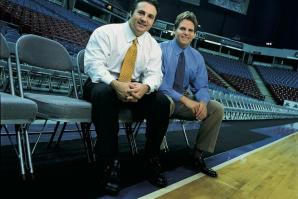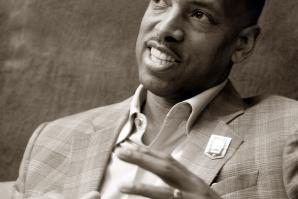Since 1985, when the Sacramento Kings played their first game in a temporary facility in north Natomas, we in the region have argued over whether, where and how to build an arena that works for fans, the team, its owners and taxpayers.
Less than a decade after the opening of the current Power Balance Pavilion (formerly Arco Arena) in 1988, its original developer/owners were lobbying for a larger downtown sports and entertainment complex — and a loan from the city to keep the team in town. Of course, the current owners, the Maloofs, have been singing that same tune since they took over in 1999.
Most recently, the Maloofs came close to negotiating the Kings out of Sacramento and into Anaheim. Sacramento Mayor Kevin Johnson showed true leadership by personally meeting with regional business leaders and convincing them to pony up $10 million in new spending on arena advertising and luxury suites.
With that commitment in his back pocket, Johnson went directly to the NBA owners meeting in New York to plead Sacramento’s case for keeping the Kings. He managed a reprieve until next March to find funding for a new venue for the franchise.
Now the mayor is asking elected, community and business leaders throughout the region to help craft an arena plan. He is absolutely correct in saying that a major new entertainment complex is a shared regional benefit and, thus, a shared responsibility.
There are still plenty of naysayers. Some question whether we should even consider such a facility during an economic downturn. They correctly point out that voters will certainly not fund it through added taxes at a time when local governments are cutting budgets and services. Some distrust the tactics of the Maloofs, who appear to threaten too much and negotiate too little.
Others say a midsize market like Sacramento simply can’t support a major sports team. They cite research saying economic gains from sports franchises and their arenas are often illusory and argue that we don’t need a new facility, even if it means losing the Kings.
I’m one of those who sees tremendous benefit from such a state-of-the-art event facility, especially if located in the railyard. Yes, there will be some short-term economic gains: If nothing more, an estimated 4,000 construction jobs to build the facility and another few hundred to operate it.
But, I would also argue the bigger gain comes from the indirect long-term impact on our region, what economists call contingent benefits. First-class events with professional sport franchises and other top-tier entertainment bring excitement and energy to a community and become an important part of a region’s effort to brand itself as a desirable location.
A multiuse facility in the railyard would spur downtown development that has eluded Sacramento for more than a decade. It would be a demonstration of the city’s and region’s ability to go beyond its ho-hum reputation as a mere rest stop between San Francisco and Lake Tahoe and show the imagination and energy that mark metropolitan areas like Indianapolis and Kansas City, where such multiuse facilities have prospered.
We should not ignore the questions and concerns being raised. Instead, we need to gather facts, discuss and debate to get beyond the opinion and narrow special interests that have marked earlier discussions.
Mayor Johnson has shown he can lead. Now, both city and regional
leaders need to show the same imaginative, can-do attitude and
participate in informed discussions about how to finance and
build a sports and entertainment facility as a home for the
Sacramento Kings, yes, but more importantly as a regional
destination and a catalyst for both downtown and regional
growth.
Recommended For You

Aloof Maloofs
How Gavin & Joe went from Sac royalty to would-be carpetbaggers
Then:
As part of the Comstock’s-sponsored Vanguard Awards issue in Sept. ‘02, the infamous Gavin and Joe Maloof graced our cover as “Outstanding Corporate Citizens.”

Mayoral Musings
'Strong Mayor' will make city more nimble, NBA matchmaking and soccer in Sac
It’s been quite a year for Sacramento Mayor Kevin Johnson, topped in most people’s minds by his stunning, come-from-behind effort to block the Maloof family from selling and relocating the Sacramento Kings. We sat down with him recently to discuss basketball and several other topics important to the Capital Region.


